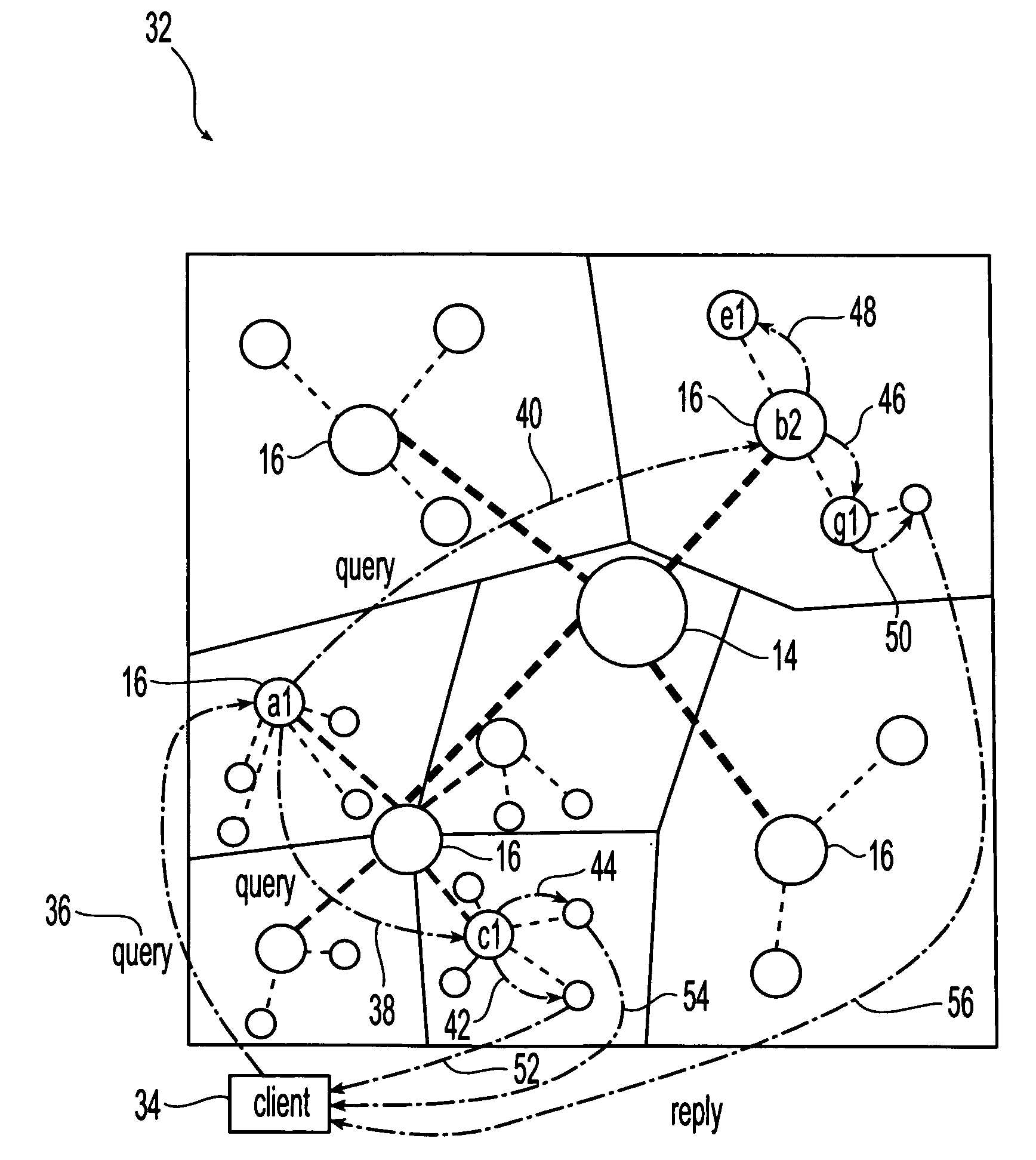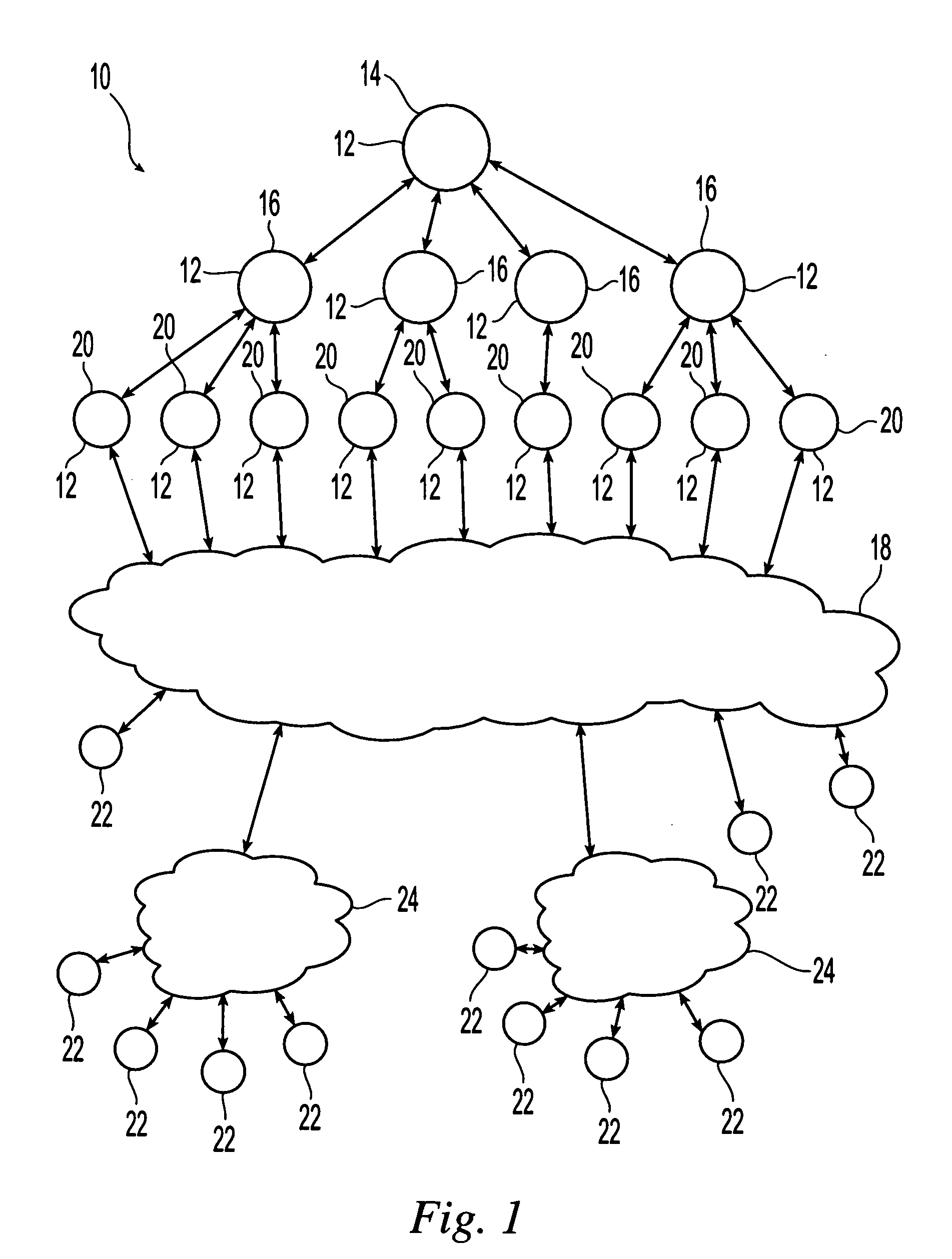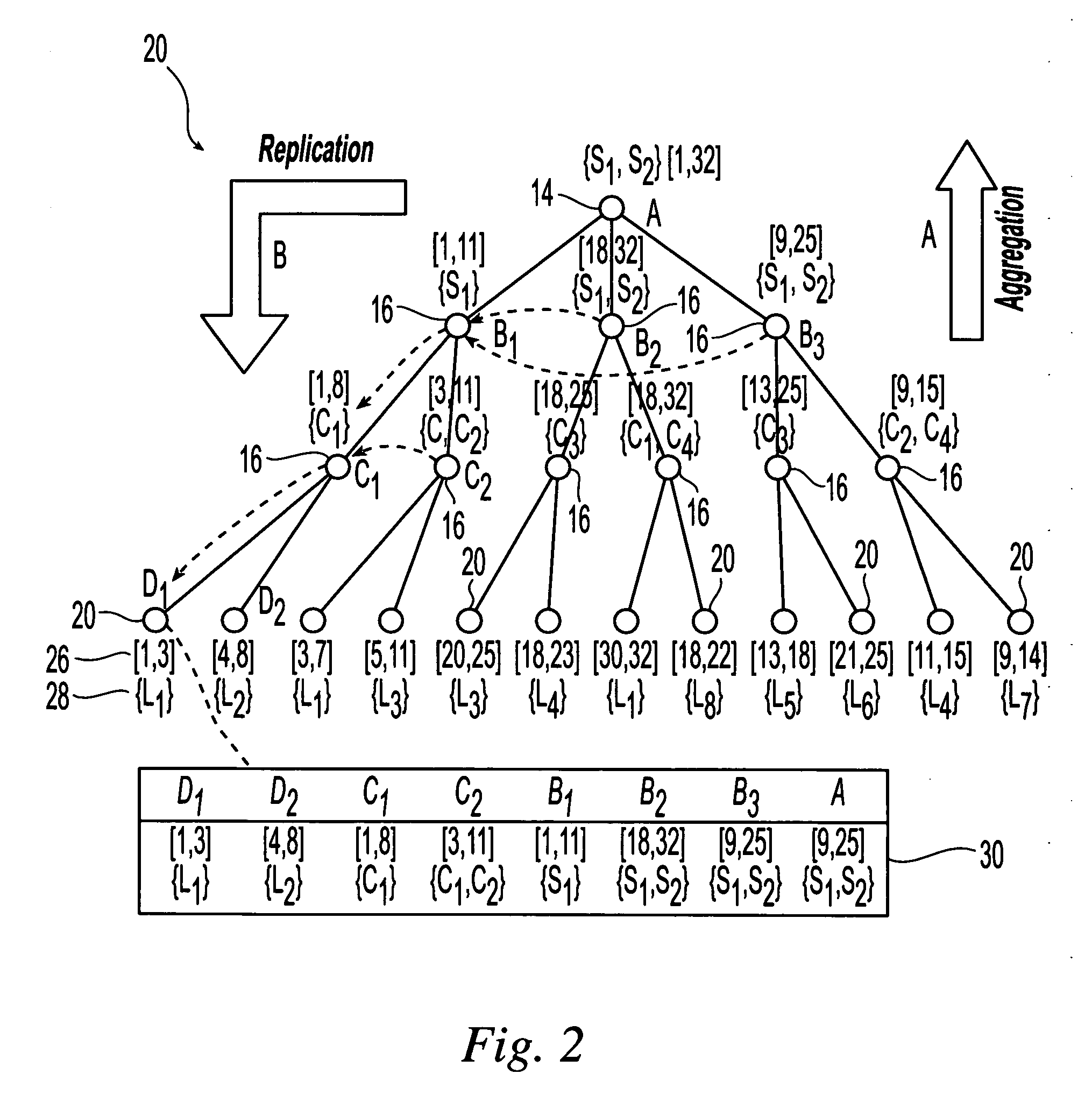Method and system for federated resource discovery service in distributed systems
- Summary
- Abstract
- Description
- Claims
- Application Information
AI Technical Summary
Benefits of technology
Problems solved by technology
Method used
Image
Examples
Embodiment Construction
[0017]Referring initially to FIG. 1, an exemplary embodiment of a system 10 for use in accordance with the present invention is illustrated. This system includes a plurality of dedicated servers 12 (D-servers) arranged in accordance with a pre-determined hierarchy. The dedicated servers are in communication with each other through this hierarchy and can exchange files or data. Suitable servers are known and available in the art and include any type of processor or processing unit capable of processing commands, storing data and communicating with other servers. In one embodiment, each server is a software program that runs on any suitable machine or processor. Therefore, servers or server functionality can be provided by any machine or domain that is willing to host a server. Suitable sources for servers include, but are not limited to resource owners or other volunteering entities. These entities can be referred to as server providers.
[0018]Suitable hierarchies into which the dedic...
PUM
 Login to View More
Login to View More Abstract
Description
Claims
Application Information
 Login to View More
Login to View More - R&D
- Intellectual Property
- Life Sciences
- Materials
- Tech Scout
- Unparalleled Data Quality
- Higher Quality Content
- 60% Fewer Hallucinations
Browse by: Latest US Patents, China's latest patents, Technical Efficacy Thesaurus, Application Domain, Technology Topic, Popular Technical Reports.
© 2025 PatSnap. All rights reserved.Legal|Privacy policy|Modern Slavery Act Transparency Statement|Sitemap|About US| Contact US: help@patsnap.com



